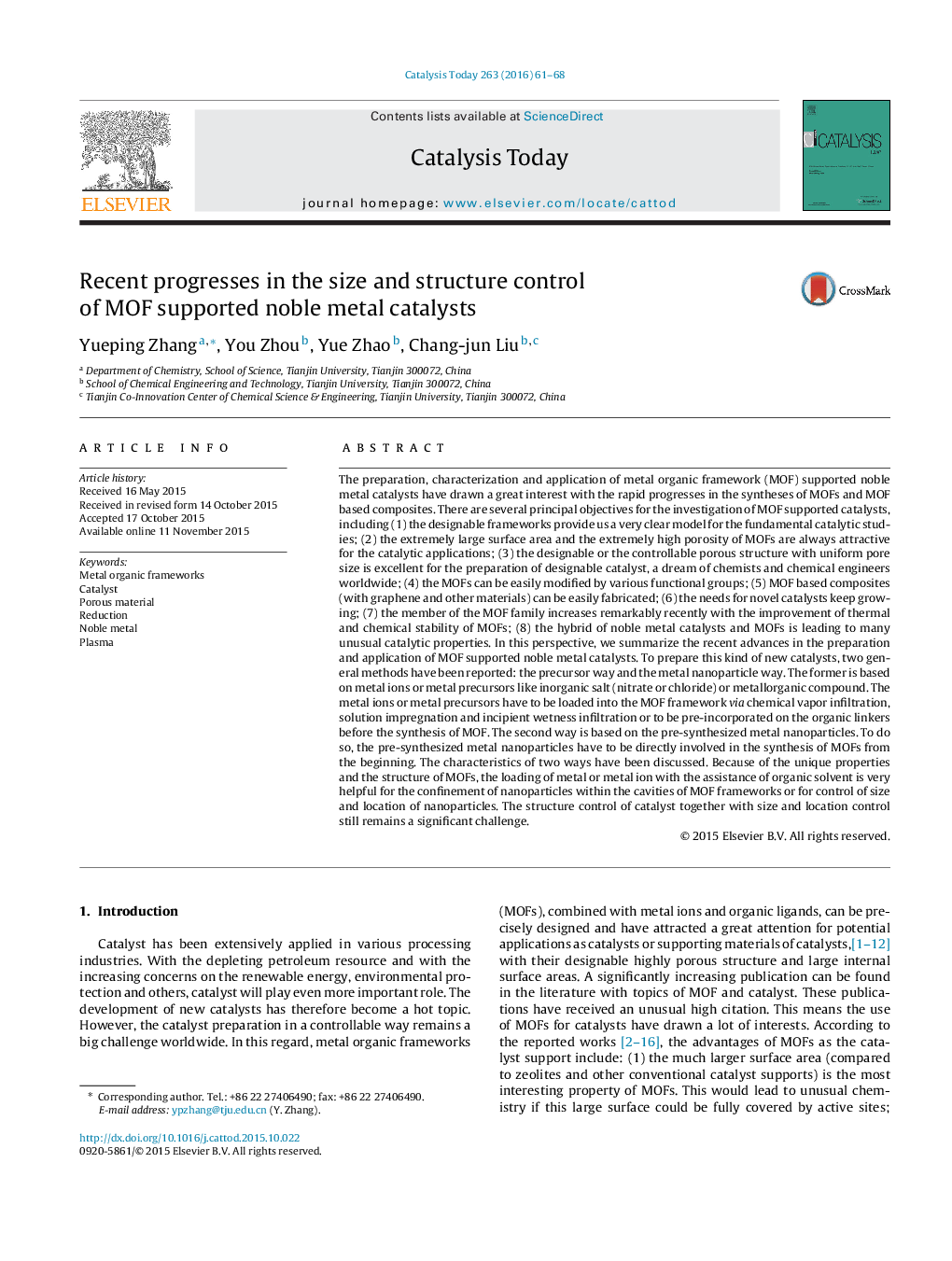| کد مقاله | کد نشریه | سال انتشار | مقاله انگلیسی | نسخه تمام متن |
|---|---|---|---|---|
| 53403 | 46968 | 2016 | 8 صفحه PDF | دانلود رایگان |

• The designable frameworks provide us a very clear model for catalytic studies.
• MOF possesses large surface area and extremely high porosity as excellent support.
• MOF supported catalysts are creating unusual properties.
• The metal precursor way has been extensively applied for metal loading within MOFs.
• MOF synthesis with pre-synthesized nanoparticles is leading to novel catalyst preparation.
The preparation, characterization and application of metal organic framework (MOF) supported noble metal catalysts have drawn a great interest with the rapid progresses in the syntheses of MOFs and MOF based composites. There are several principal objectives for the investigation of MOF supported catalysts, including (1) the designable frameworks provide us a very clear model for the fundamental catalytic studies; (2) the extremely large surface area and the extremely high porosity of MOFs are always attractive for the catalytic applications; (3) the designable or the controllable porous structure with uniform pore size is excellent for the preparation of designable catalyst, a dream of chemists and chemical engineers worldwide; (4) the MOFs can be easily modified by various functional groups; (5) MOF based composites (with graphene and other materials) can be easily fabricated; (6) the needs for novel catalysts keep growing; (7) the member of the MOF family increases remarkably recently with the improvement of thermal and chemical stability of MOFs; (8) the hybrid of noble metal catalysts and MOFs is leading to many unusual catalytic properties. In this perspective, we summarize the recent advances in the preparation and application of MOF supported noble metal catalysts. To prepare this kind of new catalysts, two general methods have been reported: the precursor way and the metal nanoparticle way. The former is based on metal ions or metal precursors like inorganic salt (nitrate or chloride) or metallorganic compound. The metal ions or metal precursors have to be loaded into the MOF framework via chemical vapor infiltration, solution impregnation and incipient wetness infiltration or to be pre-incorporated on the organic linkers before the synthesis of MOF. The second way is based on the pre-synthesized metal nanoparticles. To do so, the pre-synthesized metal nanoparticles have to be directly involved in the synthesis of MOFs from the beginning. The characteristics of two ways have been discussed. Because of the unique properties and the structure of MOFs, the loading of metal or metal ion with the assistance of organic solvent is very helpful for the confinement of nanoparticles within the cavities of MOF frameworks or for control of size and location of nanoparticles. The structure control of catalyst together with size and location control still remains a significant challenge.
Figure optionsDownload high-quality image (266 K)Download as PowerPoint slide
Journal: Catalysis Today - Volume 263, 1 April 2016, Pages 61–68